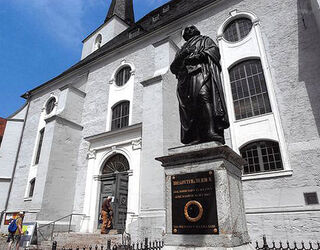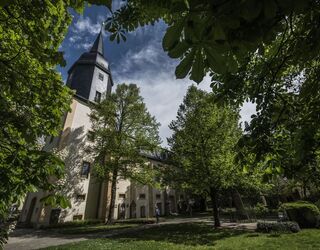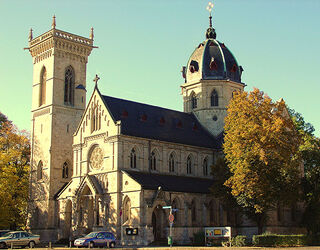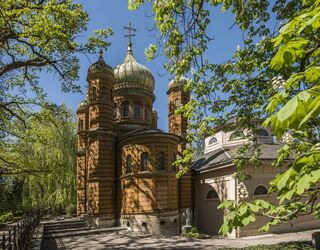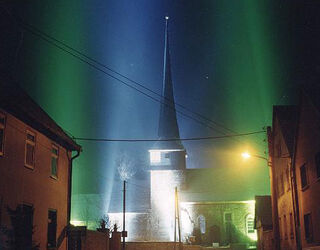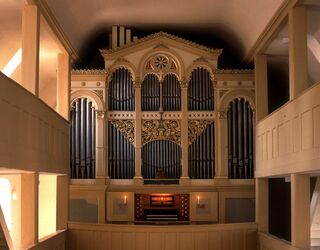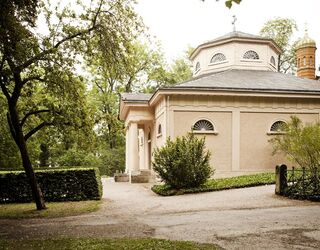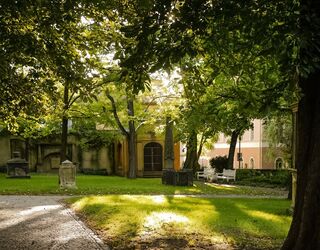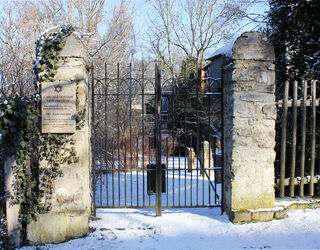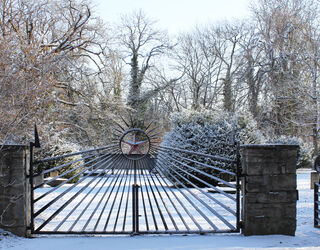St. Peter and Paul (Herder Church)
The three-winged altar by Lucas Cranach with the famous depiction of the Reformation is famous. The present church building was built as a three-nave hall church in late Gothic style. The ensemble is part of the UNESCO World Heritage Site "Classical Weimar".
Saint Jacob's Church
After its decrepit predecessor was torn down, a single-nave Baroque church was built in its place in 1713, which became the military chapel in 1728 and the court chapel after the palace burned down. When Napoleon’s troops occupied Weimar, the French converted it into a military hospital. The…
Herz-Jesu Church
The first Catholic church in Weimar wasn’t built until the end of the 19th century. The Florence cathedral was the direct model. In the 1960’s the church was renovated, the Gothic altar disappeared, the decoration on the benches was carved away and the appearance of the church became less elaborate…
Russian Orthodox Chapel
Rising up above the Historical Cemetery, gilded onion domes draw attention to the Russian Orthodox Chapel, the burial site of the Russian Grand Duchess Maria Pavlovna, the wife of Grand Duke Carl Friedrich, Carl August’s son. The mausoleum chapel was built for the Russian Tsar’s daughter from 1860…
Feininger Church in Gelmeroda
The Gelmeroda Church, nor far away from Weimar, has been one of the most beloved objects Lyonel Feininger painted during his time in Weimar.
Denstedt Church with Liszt Organ
It is particularly fortunate that there is an organ very close by Weimar that Franz Liszt played as well as cherished. In the Denstedt church, only five kilometers from Weimar, Franz Liszt held his “Organ Conferences”.
Historical Cemetery
This graveyard with a park-like feel laid out in 1918 is one of the most beautiful places in Weimar to recall the classical and post-classical eras. The coffins of Goethe and Schiller can be viewed in the Ducal Vault, and many other Weimar celebrities are also buried here.
St. Jacob's cemetery
The area has been used as a burial place since the twelfth century. It contains the graves of painter Lucas Craanch the Elder and Georg Melchior Kraus as well as Carl August Musäus (a writer of fairy tales) and Goethe’s wife Christiane Vulpius. Schiller was first laid to rest in a vault known as…
Jewish cemetery
The cemetery was laid out in 1774 at the private initiative of Jewish banker Jakob Elkan. In the years following the last burial here in 1890, the majority of the gravestones and parts of the surrounding wall were removed. The ten remaining gravestones were re-erected in 1983.
Soviet Army cemetry
This ‘Red Army Cemetery of Honour’ was set up in June 1945. By April 1946, 640 members of the Soviet armed forces who were either killed in action or died as a result of World War II had been buried there. Later on a new cemetery was established at Belvedere and used by Soviet troops for decades…
Anzeigen
